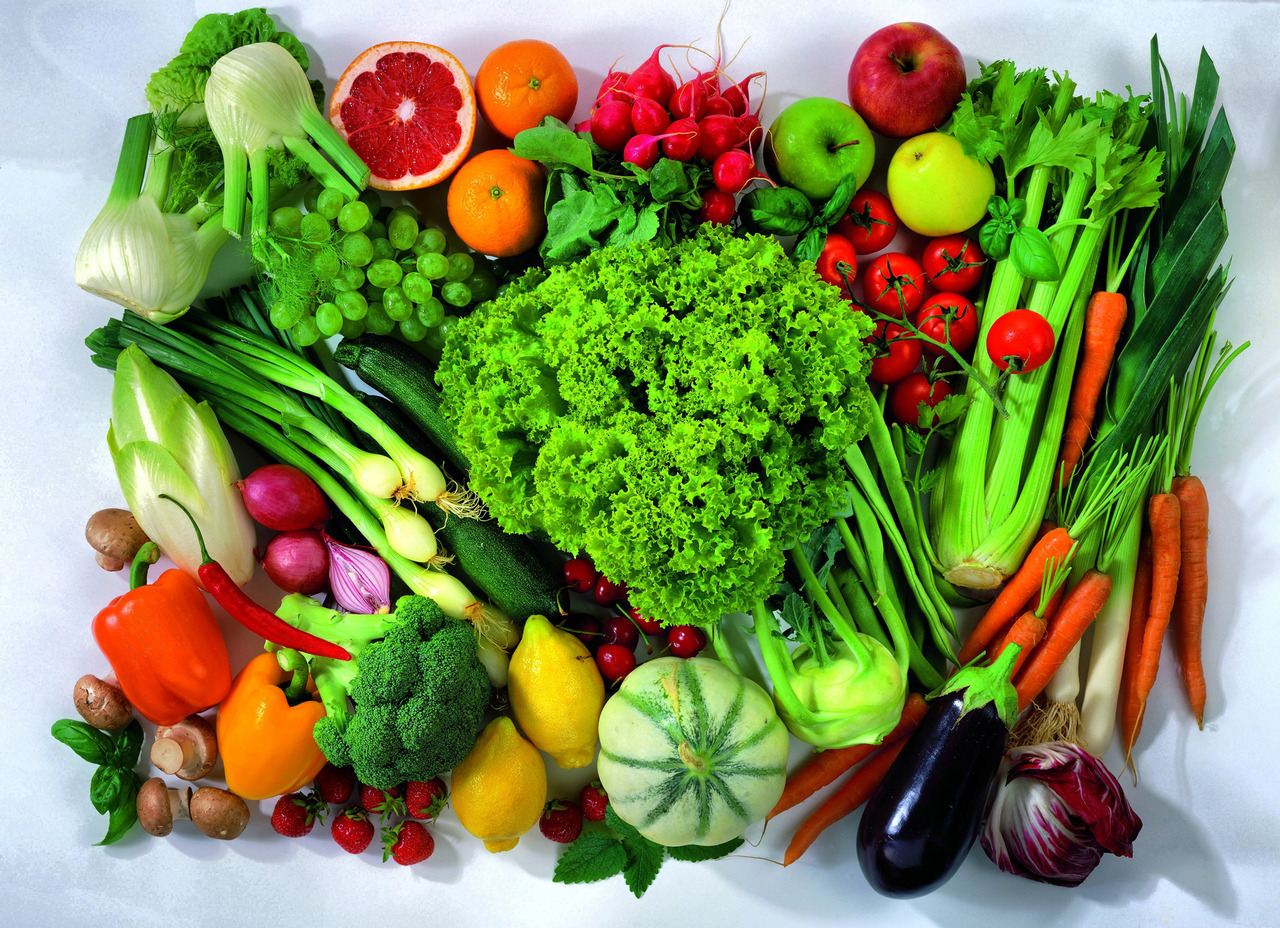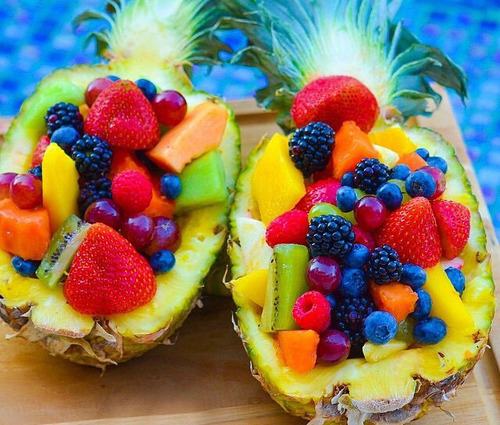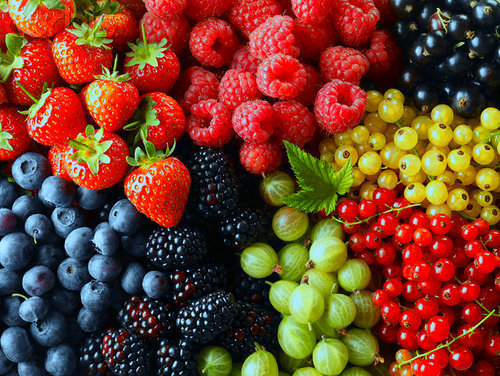I do believe in everything in moderation. I follow an 80/20 philosophy with my diet – where the 80% accounts for nourishing wholefoods, like organically sourced fruits/veggies/meat and plenty of good fats – and the 20% includes healthy treats in moderation; a few squares of dark chocolate or a glass of red wine at the end of the day. Enjoy the 20%, but make sure you are having a good quality animal protein and loads of colourful and green veggies to go with it!
Here is what a week on my plate looks like – I make sure to include heaps of variety – eating the rainbow is truly the easiest way to make sure you get all the essential nutrients your body needs!
Monday:
Pre breakfast: lemon and ginger warm water + yoga + belly breathing exercise. (Everyday)
+ Morning piccolo coffee – 1 shot of coffee with a small serve of hot milk.
Breakfast: 1/2 cup organic rolled oats cooked in water/almond/coco milk and cinnamon. Topped with berries, a scoop of vanilla pea protein and some mixed seeds. It is so important to get some good fats and proteins in at breakfast time to keep your blood sugar levels stable until dinner.
Daily vitamins: Fish oil, Multi mineral, Vitamin C. (repeated daily)
Snack: Green apple with cinnamon and ginger lemon tea
Lunch: Salmon trout served on a mixed leaf salad with avocado slices. Lemon juice and Dijon mustard mixed together for the dressing.
Snack: Carrot sticks with clean hummus
Dinner: Grilled sea bass/snapper with sautéed/steamed garlic broccoli and grilled asparagus. Lemon ginger tea/chamomile.
Nighttime vitamins: Magnesium powder and a probiotic.
Tuesday:
Breakfast: Power protein shake: scoop of vanilla pea/whey protein, 1/2 frozen banana, 1/2 cup frozen berries, 1 tbsp chia seeds, cinnamon, 1 tsp almond butter, vanilla stevia, 1 cup ice cubes, 1 cup almond milk. Blend. This keeps me so full and satisfied all morning.
+ Morning piccolo coffee – 1 shot of coffee with a small serve of hot milk.
Snack: small handful of raw almonds
Lunch: Tuna and roasted cauliflower salad: a bed of lettuce, chopped carrot, artichokes, avocado, onion, cucumber and roasted cumin spiced cauliflower. Tossed with sesame dressing made from Dijon mustard, sesame oil, tamari and white balsamic.
Dinner: Grilled salmon served with pesto green beans and a mixed salad
Wednesday:
Breakfast: 150-200g Greek yoghurt/Coyo with 1/2 cup mixed berries. Add a sprinkle of pumpkin seeds, sunflower seeds and chia seeds. Top with a handful of raw almonds and a drizzle of honey/stevia/cinnamon to sweeten.
+ Morning piccolo coffee – 1 shot of coffee with a small serve of hot milk.
Snack: 1x boiled egg + fresh green juice
Lunch: Grilled chicken and avocado salad with rocket leaves and grilled zucchini. Top with balsamic vinegar and olive oil.
Snack: Carrot and cucumber sticks with tahini dip
Dinner: Piece of lean eye fillet steak served with cauliflower mash (recipe from my book, The Healthy Life) and roasted sweet potato slices.
Dessert: 2-3 pieces of 80% dark chocolate.
Thursday:
Breakfast: Power protein shake: scoop of vanilla pea/whey protein, 1/2 frozen banana, 1/2 cup frozen berries, 1 tbsp chia seeds, cinnamon, 1 tsp almond butter, vanilla stevia, 1 cup ice cubes, 1 cup almond milk. Blend. This keeps me so full and satisfied all morning.
+ Morning piccolo coffee – 1 shot of coffee with a small serve of hot milk.
Snack: 1 cup of blueberries sprinkled with cinnamon
Lunch: Tuna and avocado brown rice sushi – from my local Japanese café.
Snack: 150g Greek yoghurt sweetened with cinnamon and stevia granules. Topped with some raw almonds – keeps my blood sugar levels nice and stable until dinner.
Dinner: Snapper in a bag – with lemon, rosemary and garlic – baked in the oven. Served with sautéed garlic spinach and a fresh green salad.
Friday:
Breakfast: 1/2 papaya with a squeeze of lime juice. Topped with Greek yoghurt and mixed seeds.
+ Morning piccolo coffee – 1 shot of coffee with a small serve of hot milk.
Snack: Carrot sticks with a smear of almond butter
Lunch: Pesto Zucchini pasta with chicken breast – amazing pasta alternative. So satisfying.
Snack: Herbal tea
Dinner: Grilled lemon and herb chicken breast served with sweet potato mash.
Post dinner: Chai tea with almond milk and cinnamon
Saturday:
 Breakfast: Warm cinnamon oats topped with 2 tbsp Greek yoghurt, banana slices and a mix of nuts and seeds.
Breakfast: Warm cinnamon oats topped with 2 tbsp Greek yoghurt, banana slices and a mix of nuts and seeds.
+ Morning piccolo coffee – 1 shot of coffee with a small serve of hot milk.
Snack: 1 carrot sliced – sprinkled with rock salt.
Lunch: Chicken, pumpkin and avocado salad – spinach leaves as the based. Drizzled with a miso salad dressing.
Dinner: Garlic and Ginger Prawn stir fry – with lots of greens and fresh herbs. Served with brown rice. Glass of red wine.
Sunday:
Breakfast: Treat breakfast of an Acai bowl from a local acai bar in Bondi.
Snack: Morning piccolo coffee
Lunch: Roasted chicken with grilled parmesan asparagus and big salad – enjoyed with my family.
Snack: Greek yoghurt sweetened with cinnamon and stevia
Dinner: Scrambled eggs with pesto and served with avocado – Sunday nights are always easy egg night!
Source







